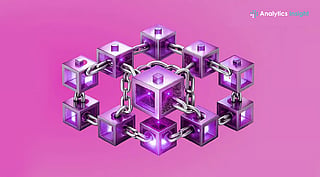
Quantum-resistant blockchain projects in 2025 focus on long-term cryptographic security.
Post-quantum algorithms, such as lattice-based cryptography, are key to resisting quantum decryption.
These networks combine scalability, decentralization, and future-proof encryption methods.
The emergence of quantum computing presents a potential threat to global encryption platforms. Experts are warning that the encryption keys used by blockchain systems may soon become vulnerable and require stronger protection.
Given the potential for this increased risk, demand for advanced cryptography will grow and, consequently, we will see the emergence of quantum-resistant blockchain solutions. This article identifies some of the foremost quantum-resistant blockchain projects to protect digital assets as the technological landscape in the crypto ecosystem evolves.
Also Read: Crypto Projects to Invest in 2025
Quantum cryptography protects user data and transaction details in the system. Some of the best quantum-resistant blockchain projects are:
IOTA is operated using MIOTA tokens. A Directed Acyclic Graph, or DAG, can eliminate miners from the blockchain. IOTA is one of the best quantum-safe crypto projects that uses Winternitz One-Time Signatures.
This technique safeguards all IoT data transactions with great speed and efficiency. The special quantum-resistant properties make IOTA (Shimmer Network) the ideal platform for every device.
The next option on the list is the QAN platform, which protects blockchain data from quantum attacks. This platform utilizes lattice cryptography to safeguard sensitive data against various types of attacks. The QAN platform is a hybrid layer-1 platform that supports multiple programming languages.
This user-friendly interface and SDKs are among the major reasons why enterprises choose this platform. Small businesses and companies can transition to a quantum-safe ecosystem with the help of this platform.
Ethereum is a reliable blockchain utilizing post-quantum cryptography, with an Ethereum 3.0 roadmap. This platform effectively tests lattice and hash signature schemes. Ethereum secures smart contracts and wallets while maintaining scalability. The tasks are operated on account abstraction and quantum-resistant address generation methods.
Also Read: HP Launches Quantum-Resistant Printers
Algorand works on a Proof of Stake mechanism to reduce attack surfaces. The team at Algorand works with many researchers to introduce stateful hash signatures. Algorand includes upgrades, such as a lattice-based cryptographic primitive to safeguard wallets and nodes.
These are some of the market-leading quantum-resistant blockchains that help achieve a higher order of security. The era of quantum computing is a crucial part of ensuring the long-term protection of digital assets at the blockchain layer.
As technology advances, the adoption of quantum-resistant solutions by governments and enterprises will become a necessity for investors seeking stability in the ever-changing cryptocurrency ecosystem.
1. What are quantum-resistant blockchains?
These blockchains use cryptographic algorithms to mitigate quantum-computer attacks.
2. Is investment in a quantum-resistant network a good option?
Yes, it is profitable for investors to invest in a secure blockchain in 2025 to ensure safety.
3. Which types of algorithms are post-quantum safe?
The algorithms, such as lattice, hash, and code-based, are post-quantum safe. All the above platforms are post-quantum crypto blockchains.
4. Which platforms are currently being used by the investors?
Platforms, such as the QAN platform and QRL, are currently used in the crypto world. Ethereum is in the testing stage and will be available soon for public use.
5. How is quantum computing risky for blockchain?
Quantum computers can damage elliptic-curve cryptography. ECC is the main thing on which all blockchain wallets operate. The above platforms are secure blockchain networks that are resistant to quantum attacks for use in 2025.
